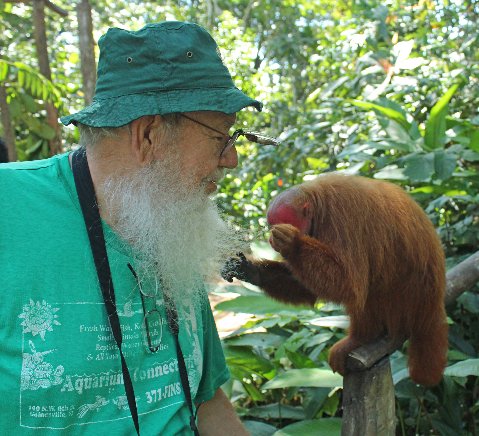Introduced to the Lower Keys from Cuba, when adult this tiny lizard is rather nondescript ashy gray in color. The color is actually a complex pattern of ash - sometimes in reticulations, sometimes as fine dots--over a ground color of olive-brown.
But when even tinier, as a 1 1/4 inch long hatchling, it is one of the most beautiful lizards in the United States.

Hatchlings have an olive green body that is often suffused with pale orange, a gray-green head, and a fire orange tail. The limbs are pale orange. Head and body bear precise bands of dark pigment. Dark blotches are present on the top anterior 1/3rd of the tail. Pretty? You betcha! The intensity of color and pattern fades with the lizard's growth.
This is a common gecko on the Lower Keys but is most common on Key West and Stock Island. Hiding by day beneath debris or behind bark on both living and dead trees, it emerges at night and may then be seen on the walls of buildings, trunks of trees, or atop debris.
The pattern fades quickly as the ashy gecko grows.

Adult ashy geckos lack all banding.

 Author, photographer, and columnist Richard Bartlett is one of the most prolific writers on herpetological subjects in the 20th century. With hundreds of books and articles to their credit, Richard and his wife Pat have spent over four decades documenting reptiles both in the field and in captivity. For a list of their current titles, please visit their page in our bookstore. Author, photographer, and columnist Richard Bartlett is one of the most prolific writers on herpetological subjects in the 20th century. With hundreds of books and articles to their credit, Richard and his wife Pat have spent over four decades documenting reptiles both in the field and in captivity. For a list of their current titles, please visit their page in our bookstore. |




To prevent automated Bots from commentspamming, please enter the string you see in the image below in the appropriate input box. Your comment will only be submitted if the strings match. Please ensure that your browser supports and accepts cookies, or your comment cannot be verified correctly.